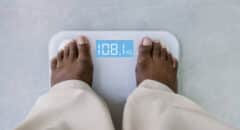
One in eight adults currently live with obesity. Spending most of adult life obese can lead to several serious diseases and illnesses, including type 2 diabetes, cardiovascular disease, certain cancers, and musculoskeletal disorders.
Despite the risks, global overweight and obesity numbers are on the rise, and a dangerous prediction has been made about the future of most adults. Read on to understand what it means to be obese, what details were included in the study, and how you might change you and your family’s future no matter what the data says.
What is Obesity Exactly?
Many factors should be considered when determining an obesity diagnosis. Many definitions mention BMI or body mass index. Your BMI is measured using your weight and cross-referencing that number to your height. While this number can give us a pretty basic picture of a person’s overall weight health, it is nowhere near the full picture.
A key metric for determining obesity is body fat ratio. How much of your total weight does fat make up? This number provides much better insights. For example, a man who is 5’8” and 200 pounds has a BMI of 30 and is considered obese based on this number. However, this number does not factor in the fact that he is a heavyweight lifter and has five percent body fat. Labeling him as obese is a misdiagnosis.
When defining obesity, always consider these numbers:
- Body fat percentage: Men with more than 25 percent body fat and women with over 30 percent body fat may be at risk. If your doctor brings up BMI, ask for a body fat percentage test if you think this number does not represent your true picture of health.
- Waist size: Women with a waist circumference of 35 inches or more and men with a circumference of 40 inches or more are at risk.
It’s also important to understand that other factors, like genetics and certain medications, may be at fault for obesity. Always consult with your doctor to get accurate testing done to determine the cause of excessive weight.
RELATED: Overweight vs. Obesity… Is There a Difference?
The 2050 Prediction
On March 8, the Lancet Journal published one of the most detailed, comprehensive reports on global overweight and obesity numbers covering 200 countries. By 2021, nearly half of the global adult population—about one billion men and 1.11 billion women aged 25 and older—were overweight or obese.
The number of men and women experiencing these conditions has doubled since 1990. If current trends persist, the global rate of overweight and obese adults could reach approximately 57.4 percent for men and 60.3 percent for women by 2050.
According to data, China (627 million), India (450 million), and the USA (214 million) are projected to have the largest populations of overweight or obese individuals in 2050.

The authors of the report called the overweight and obese pandemic a societal issue, stating that the failure to regulate food that is sold on the market has been largely to blame. The food industry has profited off largely unhealthy foods with no legislation to guide or stop them.
Experts say that if the government takes action now, there is a chance that we can change the prediction. It also does not take into account newly popular weight-loss drugs like Ozempic.
Ultimately, this study has shown us what we already know, especially in the US. If big businesses can profit, they aren’t going to think about the repercussions felt by the people. The government, especially right now, is not going to limit big business’s ability to profit. We must take this fight into our own hands.
RELATED: BMI: The Mismeasure of Weight and the Mistreatment of Obesity
How Do We Change the 2050 Prediction?
Losing enough weight to reverse an obesity diagnosis takes hard work and permanent lifestyle changes, but it can be accomplished. Every person has the power to change their life if they choose to do what is hard and necessary instead of what is fun and easy. You have the power to do this!
Lifestyle changes that can help any person lose weight include daily exercise, long-term changes in diet, drinking more water, and consuming less alcohol. Here are five things you can do today to kickstart your weight loss journey:
- Set a goal: And I don’t mean a four-week or six-week goal. Think long-term, at least six months to a year. How much do you weigh in six months? What daily habits keep you healthy? People who write down their goals increase their likelihood of success exponentially.
- Drink more water: When your body metabolizes fat for energy, that “fat” leaves the body via sweat, urination, and breathing. That means the more you drink water, the more you will, inevitably, urinate. Add the next tip to your daily habits, and you’ll be metabolizing your way to a healthy weight in no time.
- Move every day: here’s how you sweat and breathe out more fat. Even a 15-minute walk every day can help kickstart your weight loss journey. Start with a small goal, think about how it will affect your health in six months, and get moving.
- Eliminate ultra-processed foods: Think soda, candy, and packaged baked goods. Foods like these are packed with saturated fat, tons of added sugars, and high sodium. A single serving can include the majority of your sugar and sodium for the day. Make it a habit to check the ingredients list. If you can’t pronounce any ingredients listed, put it back on the shelf.
- Cut back on alcohol and sugary drinks: Did you know that one margarita has 300 calories, 41g of carbohydrates, and 31g of sugar? Based on a 2,500-calorie daily diet, you should average around 381 carbs and 63 grams of sugar in total. After three margaritas? The math is mathing! Be intentional about what you are drinking, and reach for water more often than anything else. If possible, cut juice from your diet completely. Less alcohol will boost your metabolism and energy.









